
How to Get 10K Steps a Day
In this post, I’m breaking down where the goal of 10,000 steps a day came from, whether it’s necessary, why a step goal is beneficial and how you can actually make it happen in everyday life. As a mom of 3, I know how hard it can be to squeeze in movement, so I’m sharing the simple, realistic strategies that help me get my steps in without overcomplicating things. If you’re a busy person who wants to boost your energy, improve your mood and move more throughout the day, this is for you.
Quick Links:
- Why 10K?
- How to Practically Reach 10K Steps
- Exercises and Workouts to Incorporate
- Considerations
- FAQs
As I enter my late 30s and start preparing for perimenopause, my fitness goals are simple: build as much muscle as possible and aim for 10,000 steps every day.
As a mom of 3 and a fitness trainer, I’ve learned that fitness isn’t only about what you do in the gym – it’s built in the small, consistent movements that carry us through everyday life. For me, hitting 10,000 steps a day isn’t about chasing a trend or hitting some magic number on my watch. It’s about staying mobile and capable enough to handle everything my day throws at me – hauling groceries, chasing toddlers and keeping up with a busy family schedule.
In my opinion, the foundation of functional fitness comes down to 3 things: strength training, daily movement and enough protein. That’s exactly what inspired one of the most popular workout plans on my site: the 4-30-10 Method.
Walking, in particular, is one of the most underrated forms of exercise. It keeps my joints happy, improves circulation and builds the kind of endurance that makes daily life easier and less exhausting. I notice that when I’m consistent with my steps, my energy stays steady, my mood is better and I’m more present in my day.
That said, getting 10K steps is equal to walking about 4-5 miles in a day – a goal that might not be realistic for everyone. The point of a step goal isn’t about perfection, and 10K steps a day is not a magic number. A daily step goal is about moving with purpose, stacking small wins and building strength and stamina that truly support real life.
Why 10K?
The 10,000-step target actually started as a simple, memorable goal tied to pedometer marketing in Japan. To promote the 1964 Tokyo Olympic Games, a Japanese company sold a pedometer with a name that roughly translated to “10,000 steps meter.” While the number was largely used for marketing, studies have been done to support the benefits of walking daily. Research suggests that those who get 10K steps a day have significantly lower anxiety, depression, anger and fatigue.
That said, 10K steps doesn’t need to be the goal for everyone. Increasing daily steps in any capacity lowers sedentary time, helps blood sugar control after meals, improves mood and sleep and supports weight management when paired with good nutrition. One study found that averaging between 4,400 and 7,500 steps per day significantly lowered mortality rates in older women. We also know that walking can improve your heart health, blood flow and blood pressure, while lowering your risk of cardiovascular disease, diabetes, depression and even your risk for dementia.
So, while 10,000 steps is a useful target for many people, it’s a guide – not a rule. If you’re currently getting about 2K steps a day, bumping that target to 5K is huge progress.
I personally know that 10K steps a day is doable for me, so it’s reasonable that I set that goal every day. If you want to increase your step goal, you have to think about how you can add more movement into your day in ways that fit your life. Don’t chase a number at the expense of your sanity.
Benefits
Walking is one of the best forms of exercise that you can do (and it’s so underrated). It’s low-impact, accessible for any fitness level and requires no equipment. Plus, it offers a ton of health benefits:
- Improves cardiovascular health: Regular walking strengthens your heart, lowers blood pressure and improves circulation, reducing your risk of heart disease.
- Supports weight management: Walking boosts your daily calorie burn and, when combined with healthy eating, can help maintain or reduce body weight.
- Enhances mood and mental clarity: Moving your body releases endorphins and serotonin, which help reduce stress, combat anxiety and improve focus.
- Increases energy and reduces fatigue: Daily physical activity like walking can make you feel more energized rather than drained.
- Strengthens muscles and bones: Walking engages your legs, glutes and core, helping preserve lean muscle and supporting bone density over time.
- Improves joint health and mobility: Gentle, consistent movement can reduce stiffness and prevent aches from sitting all day.
- Boosts digestive health: A post-meal walk stimulates digestion and can help regulate blood sugar levels.
- Supports better sleep: Daily activity of any kind helps regulate sleep patterns and can improve sleep quality.
- Encourages mindfulness and improved mental health: Walking gives you mental space and is a chance to step away from screens. I personally find that a quick daily walk forces me to take a desk break and gives me a moment to reset my thoughts. Oftentimes, this is when I come up with my best creative ideas!
- Builds long-term functional fitness: Walking is functional movement because it mirrors everyday motions, keeps your body capable for daily tasks and makes life with kids, errands or work physically easier.
For me, walking 10K steps isn’t just about hitting a number – it’s about feeling energized and capable.
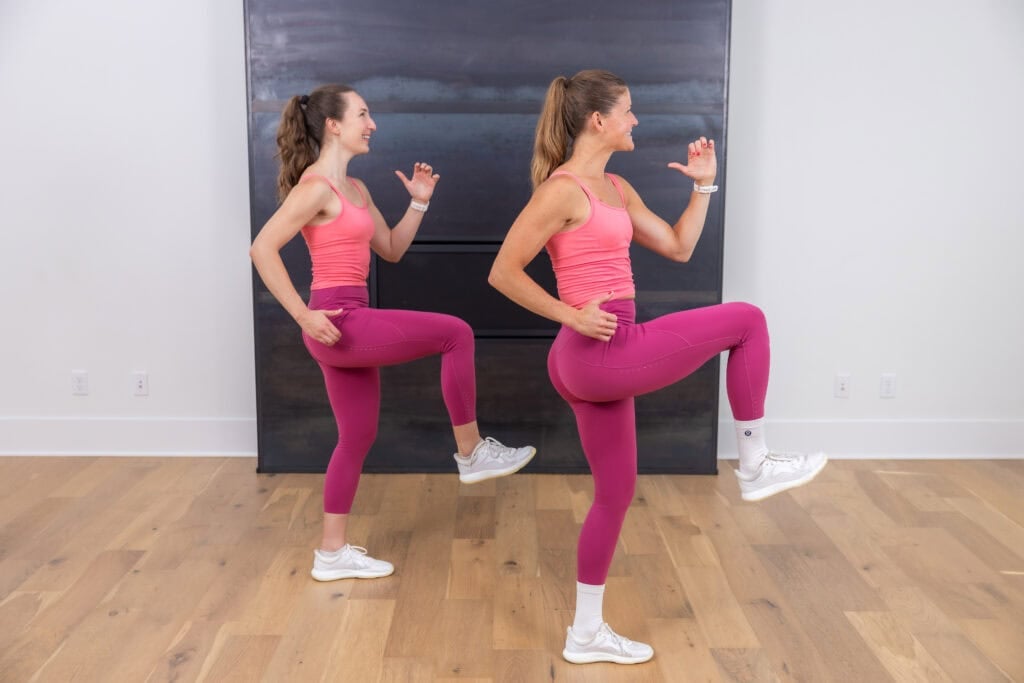
How to Practically Reach 10,000 Steps
While I know that 10K steps a day is realistic for me, I don’t expect to get all of my steps in 1 workout. I do my best to sprinkle movement across the day: a 20-minute walk outside, quick stair runs between meetings and making purposeful choices that add consistent steps without taking a huge amount of time (like parking at the far end of the lot when I run to the grocery store).
The most practical way I’ve found to achieve my goal of 10K steps a day is to plan a daily walk, making that a non-negotiable. This gives me a specific goal to meet every day. Then, I squeeze in extra steps where I can – these will come from walking during a phone call, running the stairs to switch the laundry and chasing my kids during activities. I honestly get the majority of my steps in when my kids are out of school and I’m playing outside with them!
Set Achievable Goals
If you’re just getting started, don’t feel like you need to hit 10,000 steps on Day 1. Consistency beats intensity every time. If you’re currently averaging 3,000 steps, aim for 4,000 this week and build from there. Your body (and your schedule) will adjust better when you increase gradually instead of forcing it overnight. Think of it like training any other muscle – your endurance for movement grows over time. Focus on small, steady improvements, celebrate the extra 500-1,000 steps and before you know it, you’ll look up and realize 10,000 feels like your new normal.
Make Simple Changes to Everyday Habits
If you’re trying to sneak in more steps without overhauling your whole day, the key is to layer movement into what you’re already doing. These small, intentional choices add up fast:
- Park farther away from the store, school or office instead of circling for the closest spot.
- Take the stairs whenever you can. Even a few flights here and there make a difference.
- Walk while you talk on the phone or during virtual meetings.
- Do a quick lap around the house or your office every hour to break up sitting time.
- Walk your kids to school or practice when possible, or do laps while they play.
- Use bathroom breaks as step breaks and take the long route there and back.
- Turn errands into mini step sessions and make an extra loop through the grocery store or mall.
- Go for a short walk after meals to aid digestion and sneak in 500-1,000 extra steps.
- Keep comfortable shoes nearby so it’s easy to move when the opportunity pops up.
Little movements might not feel like much in the moment, but by the end of the day, they add up to a big difference in energy, calorie burn and overall health.
Break It Into Chunks
One of the best ways to hit your step goal is to break it up into manageable chunks throughout the day. Walking 10K steps a day is the equivalent of walking about 5 miles. That could take 1.5-2 hours, depending on your pace, and I simply don’t have time for that most days. I never rely on 1 long walk to get all my steps in because it’s just not realistic with kids, work and life. Instead, I aim for a few focused blocks:
- Morning steps: I start my day with a 20-30 minute brisk walk, usually between getting the kids to school and starting my workday. It jumpstarts my metabolism, clears my head and gives me 2,500-3,000 steps right off the bat. This works well in my morning routine.
- Mid-day steps: I sneak in a walk during my lunch break or a quick loop while on a phone call. Even 10-15 minutes of movement adds 1,000-1,500 steps.
- Late afternoon/evening steps: Family walks after dinner or running around with my kids easily get me 2,000-3,000 steps (plus it’s quality time with my family!).
Breaking your steps into chunks also helps combat long periods of sitting. I make it a rule to stand up and walk for 5-10 minutes every hour. Whether it’s running the stairs to switch laundry, walking down the hall during a conference call or taking a quick lap around the block. Those short bursts might feel minor, but they add up over the day and help prevent the stiffness, fatigue and low energy that come from sitting too long. Structuring steps this way makes 10K feel more achievable and keeps my energy levels steady all day.
Make Walking Fun
If you’ve followed me for a while, you’ve probably heard me say that the best workout you can do is one you’ll actually enjoy (because you’ll be consistent!). This applies to walking. Making walking fun is one of the best ways I’ve found to actually stick to daily steps, especially when life feels hectic. I love listening to podcasts or audiobooks while I walk.
Changing up my route keeps things fresh, whether it’s exploring a new neighborhood, park or trail. Walking with a friend or family member is another favorite of mine – I get my steps in and catch up at the same time, which makes it feel less like a chore and more like quality time.
Additional Tips
There are also a few creative but effective ways you can sneak in more steps without needing a dedicated block of time:
- Invest in a Walking Pad or Treadmill: If you work from home or watch shows in the evening, walk while you do it. It’s an easy way to add thousands of steps without even leaving the house.
- Walk Your Kids to School: If you live close enough, skip the car line and make it a morning routine. You’ll get fresh air, movement and quality time all at once.
- Tidy Up with Intention: Walk through your home each evening to put things away. It’s functional movement, and the bonus is a cleaner, calmer space.
- Set an Alarm to Move: Every hour, stand up and walk for 5-10 minutes. This is a great way to break up sitting time, especially if you work at a desk all day.
- Turn TV Time into Step Time: During commercial breaks or between episodes, get up and do a few laps around the living room or climb a flight of stairs.
- Plan “Walk Dates” with Friends: Instead of coffee dates that revolve around sitting, take your drinks to-go and walk together.
- Make It a Family Game: Set a collective step goal and track it together – kids love watching the numbers climb, and everyone moves more in the process.
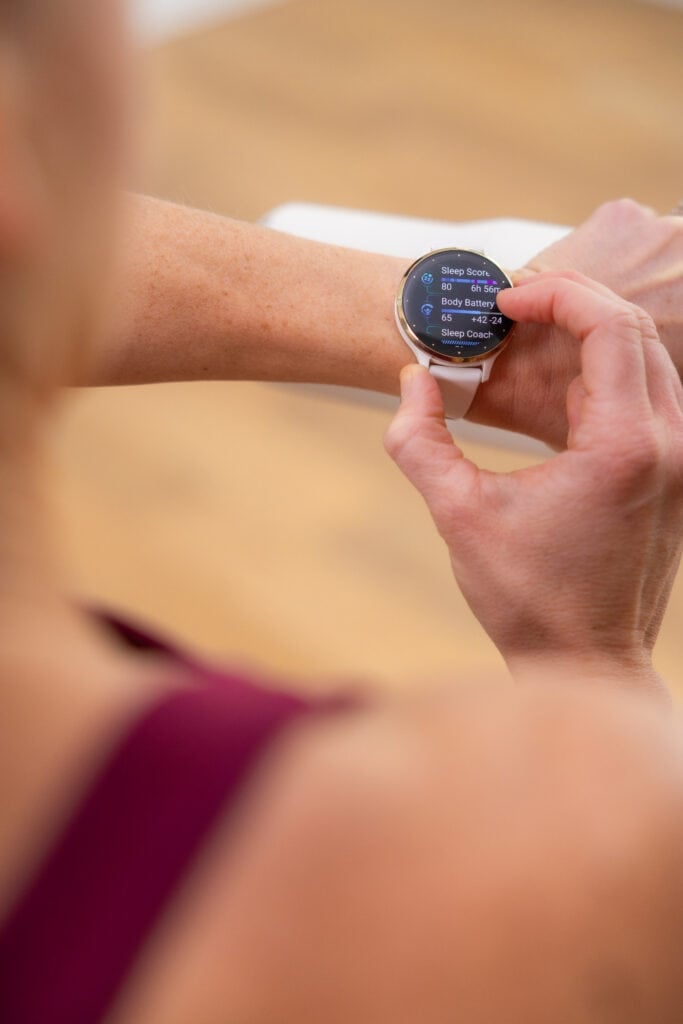
How I Track My Steps
Exercises and Workouts to Incorporate
Some days, you might need to double up and knock out a workout that’ll help you build strength and get your steps in at the same time. Or, you might not be able to get outside to get your steps in. If that’s the case, here are my favorite walking workouts:
No Equipment Workouts:
- 5-Minute Indoor Walking Workout: Only have 5 minutes between meetings? You don’t need any equipment and you don’t need much space to knock this one out!
- 10-Minute Low-Impact Cardio: A no-equipment, no repeats workout you can do anywhere!
- 10-Minute Low-Impact HIIT: Raise your heart rate at home, no jumping required!
- 15-Minute Bodyweight Cardio: 15 bodyweight cardio exercises in a quick and effective, all-standing workout!
- 15-Minute Beginner Standing Cardio: A great option for beginners – I got 1,500 steps in 15 minutes!
- 15-Minute Standing Cardio: No equipment, no repeats and no jumping! I got 2,000 steps in 15 minutes!
- 15-Minute HIIT Workout: Superset a bodyweight strength exercise with a bodyweight HIIT/power exercise.
Dumbbell Workouts:
- 15-Minute Zone 2 Cardio with Weights: Challenge your strength and endurance in this no-jumping workout.
- 20-Minute Strength and Walking Workout: Alternate cardio exercises with full-body strength exercises for a well-rounded workout.
- 30-Minute Full-Body Strength and Steps: Each circuit has a lower-body exercise, an upper-body exercise and a cardio and core exercise.
- 30-Minute Strength and Steps (LISS Cardio): I got over 2,000 steps in this low-impact steady-state cardio workout.
- 30-Minute Cardio and Strength Workout: Full-body strength at the beginning and energizing cardio at the end!
- 35-Minute Strength and Steps: 9 total-body strength exercises and a 5-minute cardio and steps burnout at the end!

Considerations
Before you make a goal to get 10K steps a day, take an honest look at your current activity level and lifestyle. If you’ve been mostly sedentary or haven’t had a consistent workout routine for a while, start slow. Trying to hit 10K right out of the gate can feel overwhelming and may lead to soreness or burnout. Instead, begin with a smaller, achievable goal like 4,000-6,000 steps per day and increase your total by about 500-1,000 steps each week. This gradual approach helps your joints, muscles and stamina adjust.
Also consider factors like your schedule, weather, available walking routes and footwear. Supportive walking shoes and comfortable clothing go a long way in keeping your walks enjoyable and sustainable.
Most people can safely work toward 10,000 steps, but there are a few exceptions. If you’re recovering from an injury, managing chronic joint pain or have a medical condition that limits mobility or endurance, it’s best to talk with your healthcare provider before starting. The goal is to move more, not to push past pain or strain. Remember that 10K steps a day is simply a guideline. If it’s more realistic for you to hit 5K or 7K in a day, that’s great. The key is consistent, intentional movement that feels good and supports your long-term health.
FAQs
The easiest way to track your steps is with a smartwatch, fitness tracker or even the built-in step counter on your smartphone. I personally prefer wearing my Garmin Venu 3S because it tracks automatically throughout the day, even when I’m not carrying my phone. If you’re just starting out, use whatever device you’ll actually check consistently. You can also log steps manually if you’re walking set routes you know the distance for. The key is to make tracking simple and sustainable so it becomes part of your daily rhythm.
While I film workouts for a living, the majority of my time is actually spent sitting behind a computer. I understand firsthand that desk jobs make movement tricky. That said, it’s absolutely doable to get your steps in with some planning. Set an alarm or reminder every hour to stand up and walk for 5-10 minutes. Take walking meetings when possible or pace during phone calls. Use your breaks to walk outside, stretch your legs or take the stairs instead of the elevator. Parking farther away, refilling your water bottle often or walking to talk to coworkers instead of messaging them all add up. Even short bursts of movement throughout your workday can make a huge difference.
Yes, walking 7,000-10,000 steps a day can support weight loss goals when paired with mindful eating. Walking increases your overall activity level and metabolism in a way that’s easy to sustain long-term. Getting your steps in also helps you manage stress and can improve your sleep – 2 factors that directly impact weight management. It’s not a quick fix, but it’s one of the simplest, most sustainable habits you can build for both weight control and long-term health.
Don’t Give Up – You’ve Got This!
If you take anything away from this post, I hope it’s that hitting 10,000 steps a day isn’t about perfection; it’s about progress. Some days you’ll crush your step goal without even thinking about it, and other days it’ll feel like a stretch. That’s normal. What matters is showing up for yourself in small, consistent ways. Every extra walk around the block, every lap during a phone call, every choice to park a little farther away – it all adds up.
And if 10K steps a day isn’t doable for you right now, that’s okay! Start where you are and do what you can. The point is to add more movement to your daily routine in a way that’s effective and enjoyable. You build confidence when you do the things you say you’re going to do, so set a goal for yourself and work to achieve it.
Don’t underestimate how effective a daily walk is for your overall health. Walking builds strength, endurance, confidence and momentum. So again, start where you are and celebrate every win along the way. Whatever your step count is, aim to be 1 percent better every day. Keep going – you’ve got this!
Fitness Info
Fitness EducationPin This Guide on How to Get 10k Steps a Day

This post includes affiliate links. I do earn a commission for products purchased using these links (at no additional cost to you). Thank you for supporting Nourish Move Love, making the content you see on this blog possible.














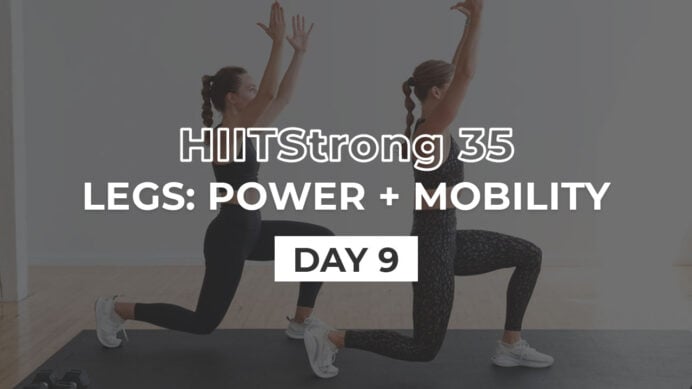
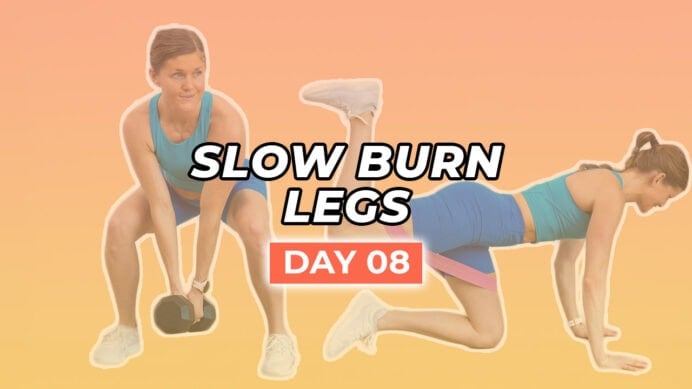
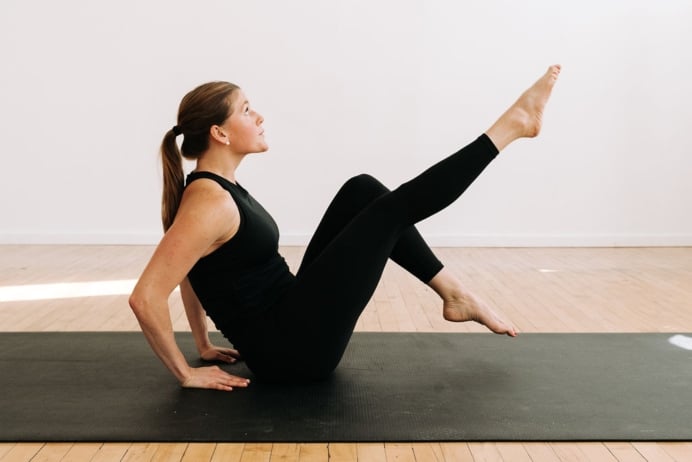


Leave a Comment